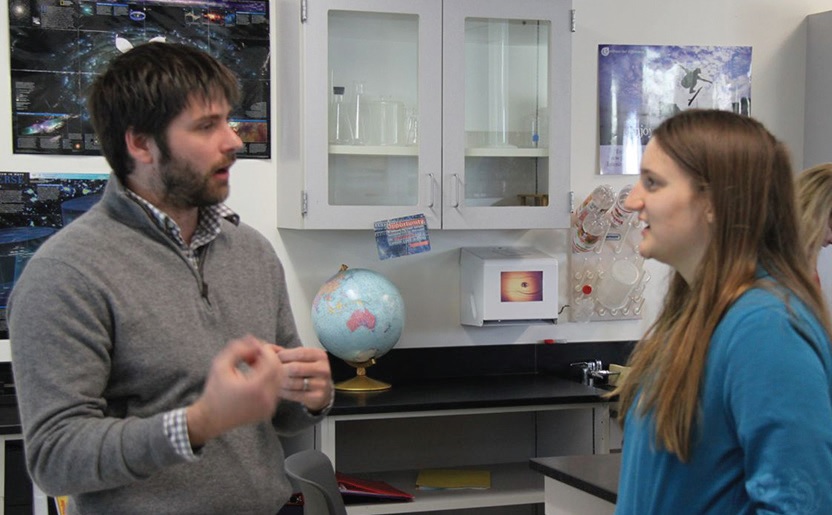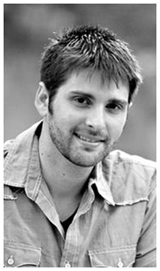Bryan Bednarz
Assistant Professor of Medical Physics
“The most important responsibility of an educator is the opportunity to influence the future of students.”
Family?
I have two boys, Wystan who is 2 1/2 years old and Otto who is 6 months old. My wife’s name is Lauren and she works at the Health Innovation Program on campus in the area of public health.
What book are you currently reading?
I’m reading “The Idea Factory: Bell Labs and the Great Age of American Innovation” by Jon Gertner. I’m also reading “The Singularity” Is Near by Ray Kurzweil.
In the Spotlight
What is your position in the department? What are some of the projects/research you currently are working on?
I’m an assistant professor in the department and hold an affiliate appointment in the Department of Engineering Physics. I’m the PI of the Radiological Engineering and Design (RED) Lab. As an engineer by training, my research naturally gravitates toward problems that require engineering solutions. In short, my lab builds things that help advance the beneficial uses of ionizing radiation. The projects in my lab vary. We have built a ‘radiation printer’ that scans a small radiation beam with varying intensity across small pockets of cells. We have built a software tool that models individual particle transport in humans to help improve nuclear medicine procedures for cancer patients. We are building a special type of ultrasound device that will allow physicians to see how a tumor moves in patients in real time during radiation therapy treatments.
What attracted you to Madison? How did you get started with our department?
Two of my uncles received Ph.D.’s from UW in the 1980’s, one in Plant Pathology and the other in Biochemistry. I recall them telling stories about having to remove car batteries during cold winter nights just to make sure the car would start the next morning. That was my first impression of Madison. I learned about the department through a nuclear engineering professor I had at the University of Michigan, named Alex Bielajew, who taught Radiological Physics. He was a friend of Rock Mackie. I remember him saying that only Wisconsin teaches this course better than he does. That left an impression, because the course was elegantly taught and really darn hard.
When Paul Deluca moved up to Bascom Hill and relinquished his teaching responsibilities there was a vacancy. In 2009 a PVL for his replacement was put out for applicants who could teach Health Physics and whose research interests included proton therapy. I think there are very few scientists that met those qualifications and so, fortunately for me, I benefited from a low sample size and was offered the position.
How has your research progressed, from your graduate thesis to your post-doc work at Harvard to your many projects here as a Professor?
The type and scope of the problems I attempt to solve has certainly evolved during that time. Part of this has been a natural evolution due to maturation, but I also think some part of this evolution has been out of necessity. When you hire graduate students, post-docs, etc., you need to find ways to fund them through grants or other resources. Ideas these days not only have to be spectacular, but they also have to be fundable. Therefore, you have to realign your interest somewhat to find funding for your laboratory.
What is your favorite part of your job?
The most important responsibility of an educator is the opportunity to influence the future of students and the greatest reward is to do that well. I have been fortunate to serve as an advisor for several students. My first two Ph.D. students are now at Stanford University.

Bryan Bednarz talks with a student at Clark Street Community School
You just received a new grant – what are you hoping to accomplish with this funding?
We have been fortunate enough to receive multiple grants very recently. I have an R01 that was funded in collaboration with GE Global Research Center. We are developing an advanced image-guided radiation therapy platform that combines ultrasound imaging and MRI. I have an R21 in collaboration with a pediatric oncologist where we are investigating the use of a novel radiopharmaceutical to treat a variety of pediatric cancers. We also have contracts with a couple small businesses to develop new treatment planning tools for internal nuclear medicine and external beam radiotherapy procedures. Of course, we hope to accomplish all of the aims of each grant. However, this is not the only important outcome of a grant. We can’t forget that grants are also used to fund students and so they serve as platforms to help train the next generation of thinkers and innovators.
Is there any advice you have received in school or during your career that you would like to share?
I tell my students to work hard and good things will happen. I also know first-hand the value of having a plan. Have a plan and execute it.
